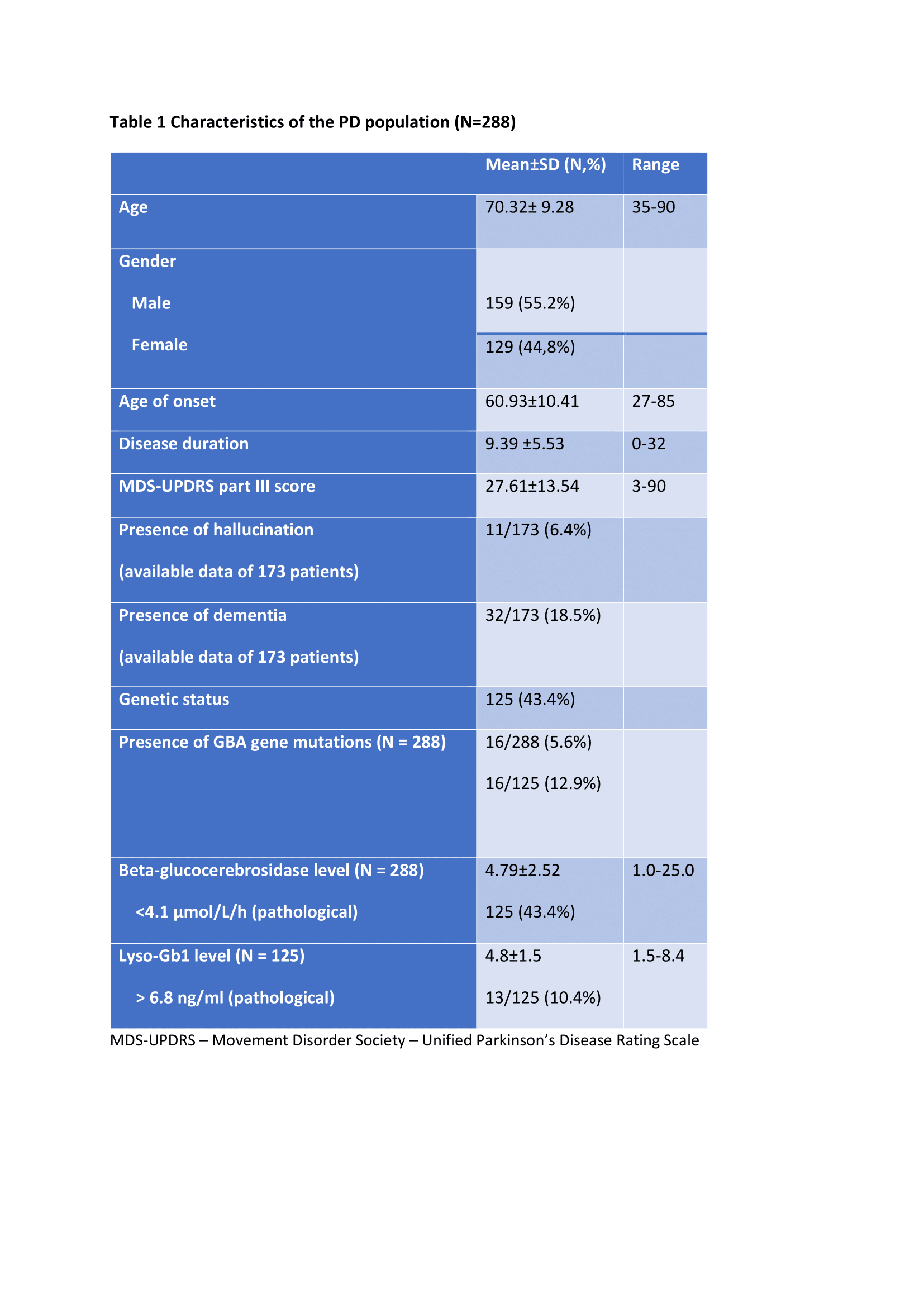Category: Parkinson's Disease: Genetics
Objective: Our study aimed to determine the prevalence of GBA parkinsonism in the Slovak population with Parkinson’s disease (PD).
Background: In recent years, there has been an increasing number of studies on the association between PD and heterozygous GBA variants [1]. While homozygous GBA variants cause Gaucher disease (GD), heterozygous GBA variants increase susceptibility to PD and are now considered one of the most important risk factors for its development [2]. However, data on the prevalence of GBA parkinsonism are lacking in Central Europe.
Method: We recruited 288 consecutive patients with PD in a single tertiary movement disorders center in Košice, Slovakia. We collected clinical and sociodemographic data, including the MDS-UPDRS part III scores and HY stage and information on the presence of dementia and hallucinations. In-depth phenotyping was performed in subjects with identified GBA variants. A multistep approach including standard determination of beta-glucocerebrosidase (GCase) activity was performed. In case of abnormal findings, we measured the concentration of LysoGb1 and performed next-generation GBA sequencing in a routine diagnostic setting.
Results: The mean age of our patients was 70.32±9.28 years, 159 were men (55.2%) and the mean disease duration was 9.39±5.53 years. Among the examined patients, GCase enzyme activity was low in 125 patients (43.4%), and subsequent Lyso-Gb1 testing showed higher values in 13 patients (10.4%). In 125 subsequently genetically tested patients, we identified sixteen heterozygous GBA variants (12.9%), which amounts to 5.6% prevalence of GBA parkinsonism among Slovak patients with PD. These including 4 carriers of p.(Gly416Ser) variant, 4 carriers of p.(Asn409Ser) variant, 2 carriers of p.(Leu483Pro) variant and single carriers of p.(Arg368His), p.(Arg202Gln), p.(Glu427Lys), p.(Arg159Trp), p.(Asn227Lys) and p.(Leu135Pro) variants.
Conclusion: Heterozygous GBA variants seem to be quite common in the population of PD patients in Slovakia. Since GCase levels are reduced in a significant proportion of our PD cohort, new therapeutic approaches, which are currently being tested in patients with GD and GBA parkinsonism, may be of practical importance not only to GBA variant carriers.
References: References:
1. Malek N, Weil RS, Bresner C, et al. Features of GBA-associated Parkinson’s disease at presentation in the UK Tracking Parkinson’s study. J Nuerol Neurosurg Psychiatry. 2018; 89:702-709.
2. Sidransky, Ellen, a Grisel Lopez. “The Link between the GBA Gene and Parkinsonism”. The Lancet Neurology, roč. 11, č. 11, november 2012, s. 986–98. DOI.org (Crossref), doi:10.1016/S1474-4422(12)70190-4.
To cite this abstract in AMA style:
A. Lacková, V. Han, P. Pavelekova, Z. Gdovinova, M. Skorvanek, K. Kulcsarova, M. Ostrozovicova, T. Lorincova, P. Bauer, CH. Beetz, S. Oppermann, E. Tusay, B. Kovacova, B. Stasko, E. Petro, S. Bohacova. Prevalence of GBA parkinsonism in Slovak Parkinson’s disease population [abstract]. Mov Disord. 2022; 37 (suppl 2). https://www.mdsabstracts.org/abstract/prevalence-of-gba-parkinsonism-in-slovak-parkinsons-disease-population/. Accessed December 17, 2025.« Back to 2022 International Congress
MDS Abstracts - https://www.mdsabstracts.org/abstract/prevalence-of-gba-parkinsonism-in-slovak-parkinsons-disease-population/

